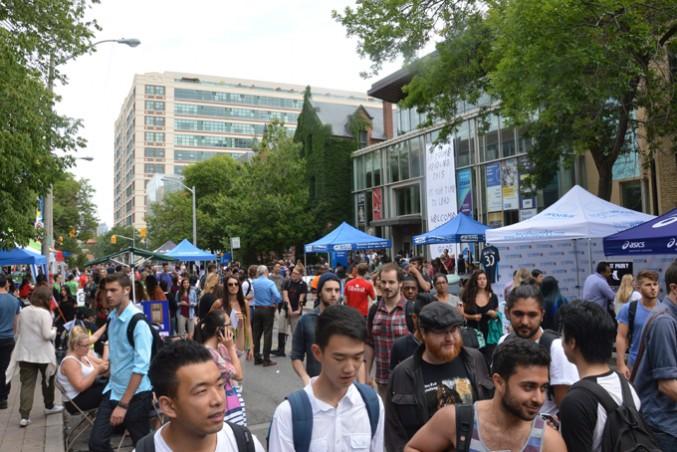By Emily Craig-Evans and Farnia Fekri
A first-year creative industries student who uses a power chair was unable to fully participate in her faculty’s frosh due to barriers on campus.
Victoria Lacey discovered that daily registration for the Faculty of Communication and Design (FCAD) frosh on Sept. 1 was in the centre of Lake Devo, beyond a two-foot step — with no ramp in place.
“I had to stay on the edge with my student card and have my attendant go down,” said Lacey.
Later that night, she arrived at the Marquis of Granby for the first of two FCAD socials. When she couldn’t find a ramp, she approached the bouncer, who told her the space was not accessible.
“I just left and went home,” she said, not bothering to attend the next night’s social at the Brunswick — which was also inaccessible, according to Tavia Bakowski, FCAD’s frosh organizer and Ryerson Communication and Design Society’s (RCDS) vice-president events.
“There are like five stairs going up to it,” Bakowski said. “I apologize. It was my mistake not to re-check with venues and re-check with socials — it’s kind of a rookie mistake.”
On Sept. 2, Lacey was disappointed again to discover that FCAD’s paint party wasn’t accessible either.
“I was planning on attending, it looked really fun, but it was also in [Lake Devo] so I wasn’t really a part of it, I was just watching,” she said.
Bakowski said she assumed the Zamboni ramp would be at the lake, but arrived on the day of to see that it wasn’t.
She added that they couldn’t put in a ramp at that point because Lake Devo is controlled by the city and would require “a lot of back and forth that takes longer than a week.”
Lacey didn’t have issues attending any other frosh activities and found her frosh group very inclusive. “I still had so much fun and met some great people,” she said.
According to Ryerson’s accessibility coordinator Heather Willis, efforts were made to make frosh as a whole more inclusive this year by educating orientation leaders on inclusivity, as well as introducing access tours, which showed students barrier-free routes on campus.
Aside from the physical limitations of the campus, Willis said a big part of the restriction towards people with disabilities is in attitudes and ignorance.
“When you’re not being intentionally inclusive, you might be unintentionally exclusive,” she said.
Willis and her team at Access Ryerson are currently developing a series of Facility Accessibility Design Standards to make the campus more accommodating.
After adopting the program by the end of this academic year, she said, the university will go through a “comprehensive audit of the campus” to judge where Ryerson ranks in terms of accessibility, and begin addressing the most pressing issues.
The Ryeron Students’ Union is waiting for this report in order to plan further initiatives, said RSU President, Andrea Bartlett.
“There’s no accessibility report that is relevant to our campus that we can have access to, so we’re waiting for the university,” she said.
With files from Laura Woodward.










Leave a Reply